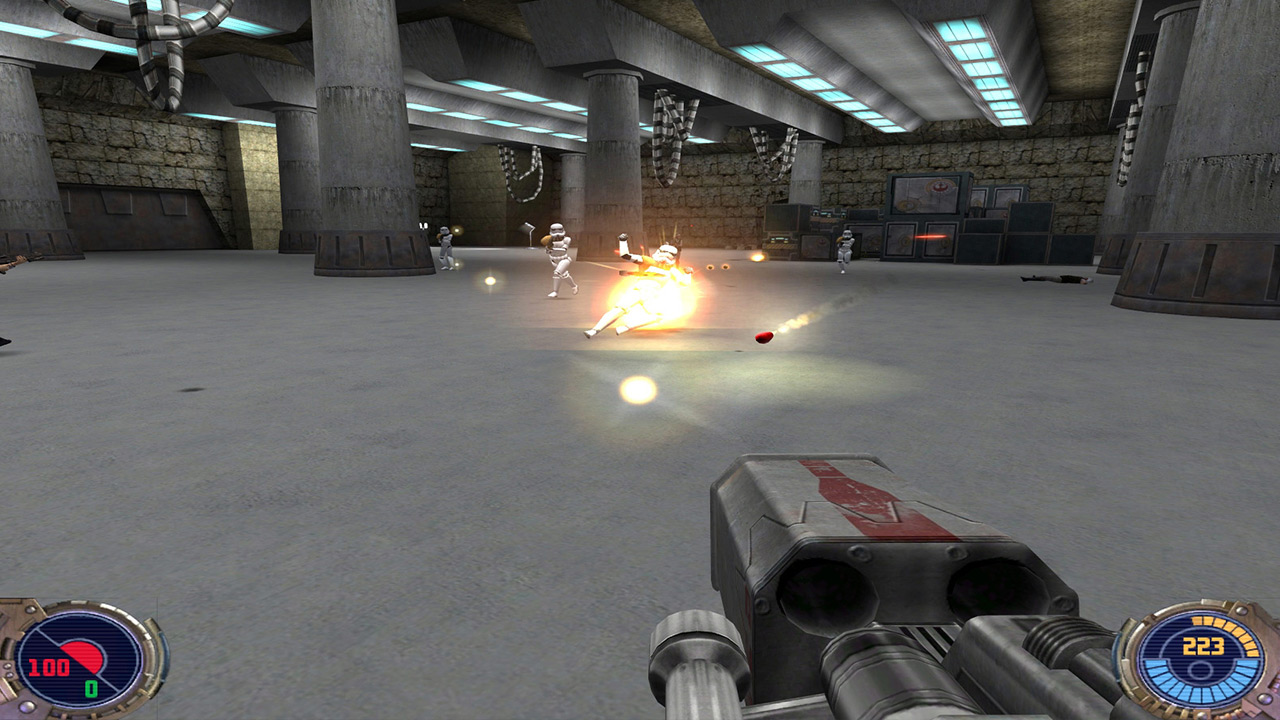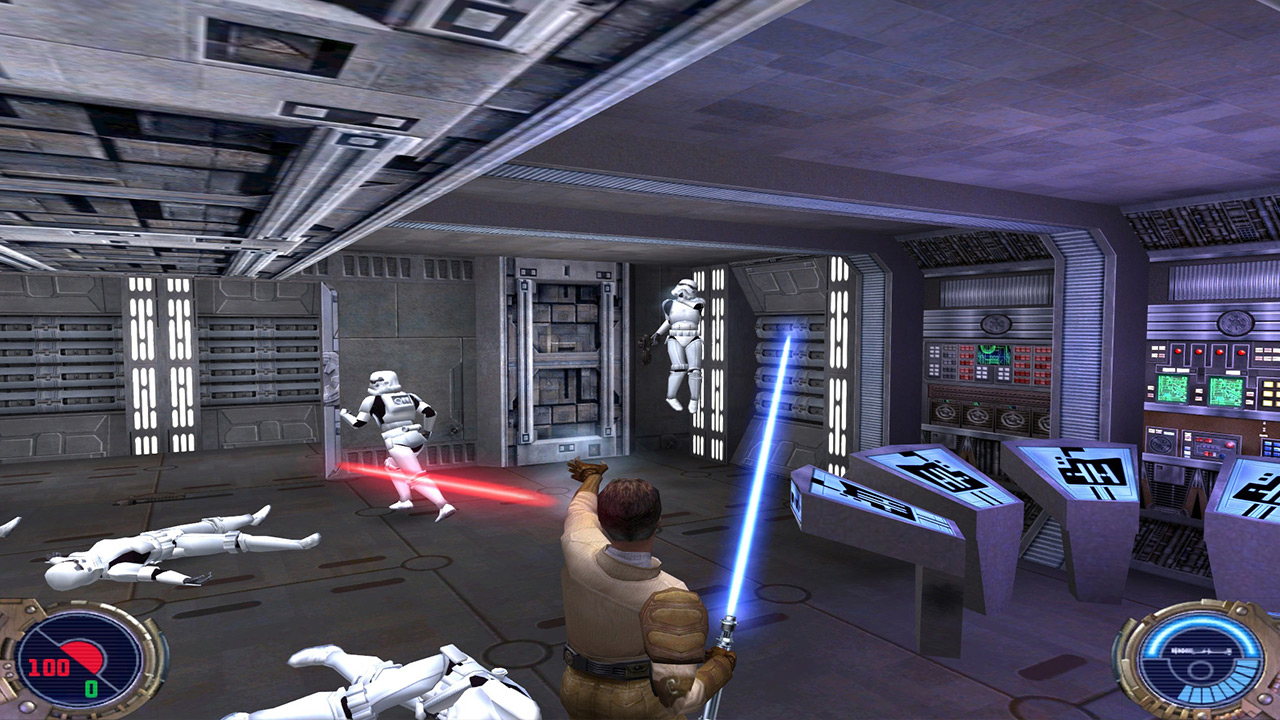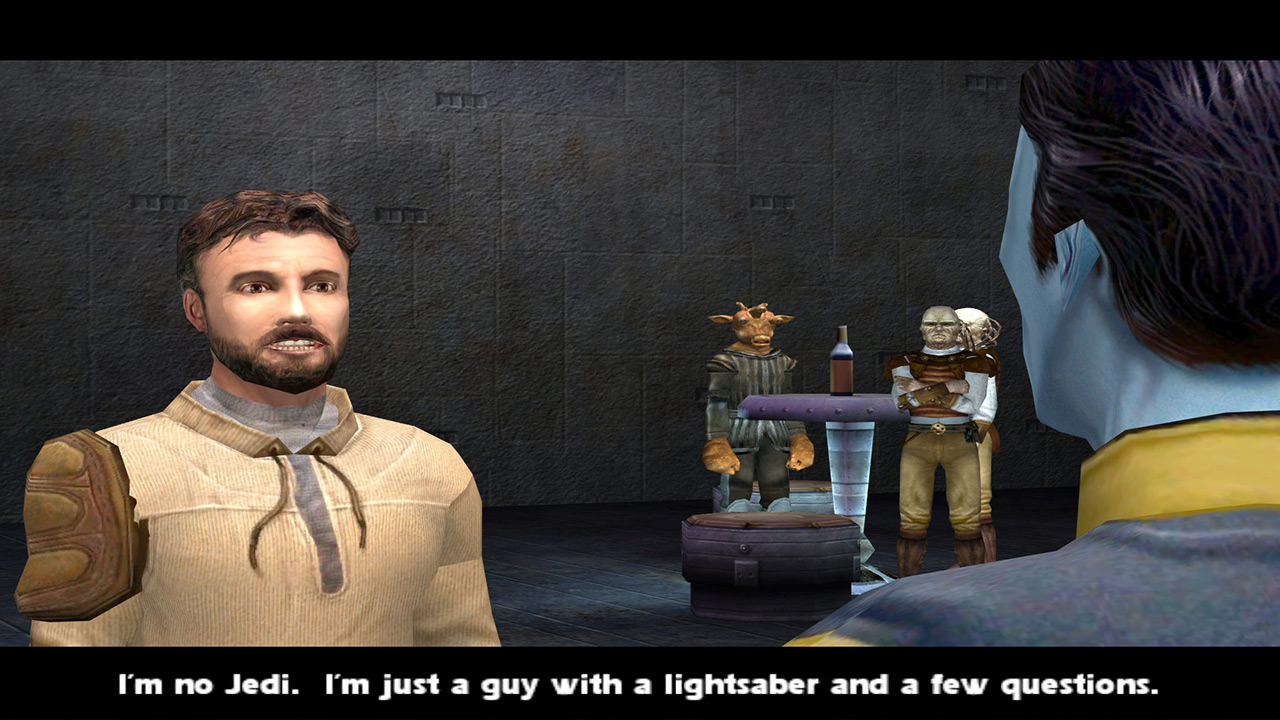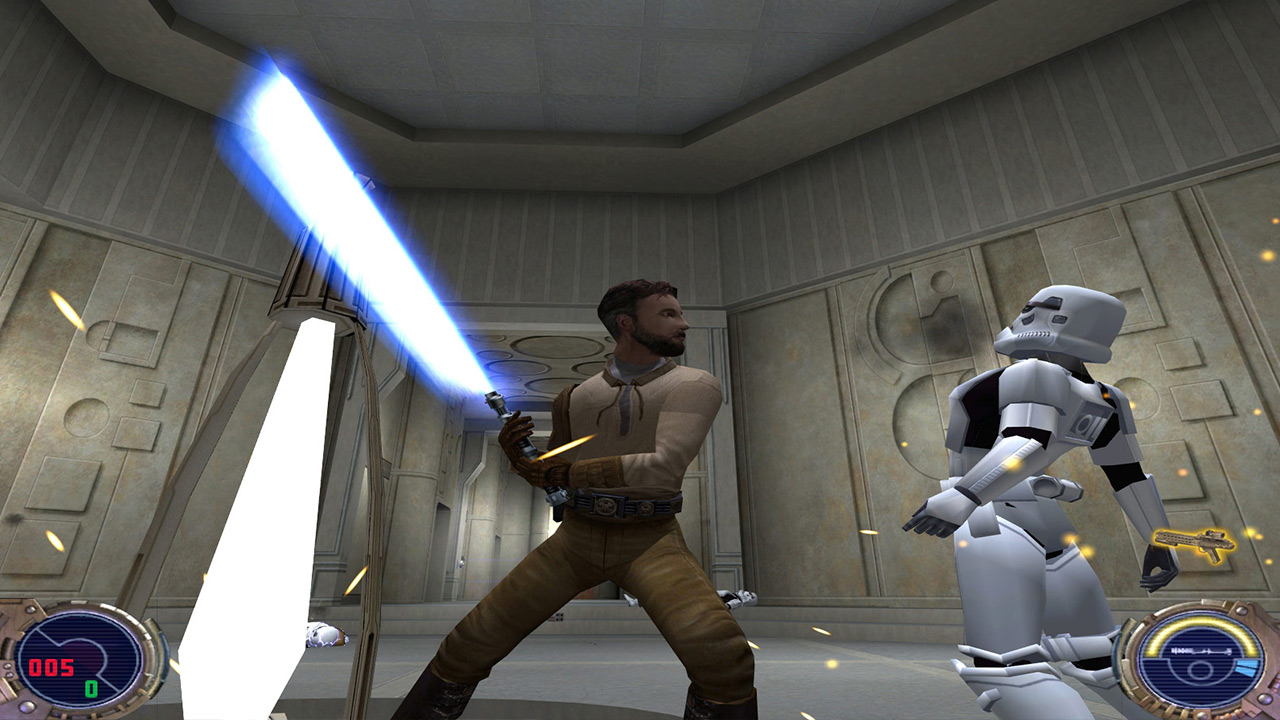May the Force be with you. Eventually.
We could open with the iconic scroll verbiage, but I’ll spare you that one. You know where you are and when you are—you’re in the Star Wars universe. What you may not know is who you are. In Star Wars Jedi Knight II: Jedi Outcast you are Kyle Katarn, mercenary and Force sensitive. That’s right, as you progress in the game, not only will you get to use a light saber (and who doesn’t want one of those for Christmas?) you get to unlock some fun Force abilities.
Let’s first talk about the beginning of the game, which isn’t great. The first few hours are a bit of a drag, and you’ll need to used to saving your progress manually…a lot. Through the action up front—shooting storm troopers and figuring out sequences of events to get to where you need to be—be prepared to die frequently. The checkpoints are far enough apart that you will want to make full use of the five save slots you get.
There are also some “ho hum” moments go Jedi Outcast due largely to the game’s age. It is over 16 years old, after all.
Another drawback with Jedi Outcast for the Nintendo Switch is the way the game handles movement. Joy-Con sensitivity is set a bit high. There is also a motion detection component with the Switch, so, as you move about physically in the real world in handheld mode, your perspective and the point at which your blaster is aimed moves with you. The movement is not a one to one proposition, so if you swing 90 degrees in the real world, you only get about half of that in the game. This can provide some sensitivity with targeting, and it’s less than optimal for good game play. Speaking of targeting and shooting things, the storm troopers in this game seem to love to run right at you then run about in random directions strafing you and staying close to you.
On the upside, there is plenty of gameplay time to be had so it won’t be over in a flash and a bang. Speaking of bang, the weapons you get are about what you would expect: a pistol (which is more accurate than you might think), a blaster rifle, a stun baton (for when you want to see the enemy twitch…), and the occasional thermal detonator. Sadly, the thermal detonators don’t have the greatest blast radius or the ability to make a hole in a window, but the weaknesses seem to be intentional limitations to advance the plot.
As for the plot, you are on a fairly simple seek and destroy mission. The base you are checking out is supposed to be empty, but you already know it isn’t, don’t you? There are some really nice story elements that prevent Jedi Outcast from being just another boring shoot-‘em-up.
You also get the classic Star Wars score for background music and all the familiar sound effects we want to hear—from blasters to doors to what everyone wants: light sabers.
The graphics of this version of Jedi Outcast are usually smooth and detailed. There are still areas which look dated, but it is easy to forgive any shortcomings. The frame rate is pretty good, so moving around is smooth (if a bit too fast with the turns and perspective control). The only real gripe I have about the visuals is that there is a lot of dark on dark going on. You have a pair of binoculars in your inventory, but they only help a little bit in low light conditions and you can’t use some items while wearing them. Due to the dim lighting and level of detail you will want to play this in docked mode; the small Switch screen in handheld mode just doesn’t do the game justice.
Once you push your way through the first part of the game you get to meet your teacher and start unlocking your Force abilities, including learning to use a light saber. That’s when the game really becomes fun (it has been commented that Jedi Outcast has some of the best light saber battles in the Star Wars game universe). To quote one of our favorite Star Wars universe denizens, “Impressive…”
The last downer with Jedi Outcast is there is no multi-player mode at this time, even though the original version included it. This can be a major problem with some games, but I don’t think it’s all that tragic here because Jedi Outcast has such a robust and engaging single-player campaign.
Review: Star Wars Jedi Knight II: Jedi Outcast (Nintendo Switch)
Good
Star Wars Jedi Knight II: Jedi Outcast is a bit of a grind at the beginning, but if you can endure the first part then the game will open up into Jedi Force battles and light saber combat which will make all the Star Wars fans happy. For the cost of the game (currently only $9.99), it’s worth putting in your rotation.






